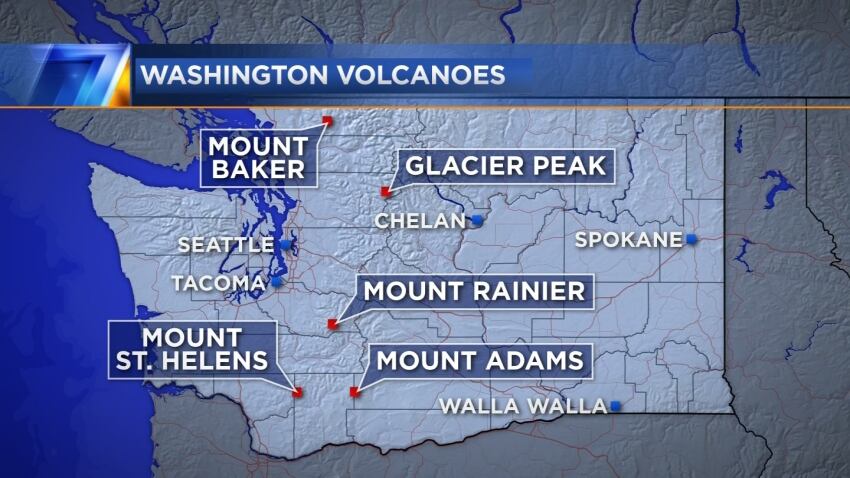May 18, 1980.
After weeks of activity, Mount St. Helens erupted, triggering a magnitude 5.1 earthquake and exploding ash into the air.
The eruption killed 57 people and destroyed 200 homes.
“1980 was a watershed for us,” says Bill Steele, who works at the Pacific Northwest Seismic Network. It’s one of the organizations that increased its monitoring following the Mount St. Helens eruption. It helps the Cascade Volcano Observatory track Washington’s five active volcanoes: Mount Baker, Glacier Peak, Mount Rainier and Mount Adams, which is the only one of them that hasn’t recorded some kind of eruption in the last 250 years.
“A volcano can remain quiet for hundreds of years, but pressure magma will build and enough gasses will build and start pounding to the surface," Steels says.
In fact, Steele believes Mount St. Helens is due for another eruption -- but on a smaller scale.
“I wouldn't be surprised if it happened next year, but it won't be the same magnitude of what we had in 1980."
Each of our state’s volcanoes has recorded a major eruption. Glacier Peak is considered the most dangerous. One of its eruptions 13,000 years ago was five times the size of the Mount St. Helens eruption in 1980. But it is currently monitored less than any of the others, with only one analog instrument. That’s why permitting is underway in hopes of installing better monitoring equipment next year.
Most people in Pierce County recognize the sound of the lahar warning sirens. They could be a lifesaving warning if Mount Rainier erupts. This summer, the country, in partnership with the U.S.
Geological Survey, will install improved technology in new locations so the instruments can better survive during a debris flow.
High-speed flows can cause destruction within 10 miles of an eruption. Much larger eruptions can be devastating, from the ash pouring into the air to the lahar flowing into populated areas.
“When it comes to lahars and debris flows, those are near the river valley, but they can run all the way out to Commencement Bay or down in the direction of the Kent/Renton/Auburn Valley,” Steele says.
Volcanoes that are part of what's called the “Ring Of Fire” stretch around the edges of the Pacific Ocean.
It’s home to 90 percent of the world’s earthquakes and 75 percent of the world’s volcanoes.
“Where ocean plates are subducting or dipping down beneath continents and, like in Cascadia, a part of that generates volcanic magma that feeds volcanoes,” says Steele.
Despite having five volcanoes in Washington, most of the activity is rarely noticed or felt by the average person. Improving technology, including satellites, are helping monitor volcanoes even during periods when they appear dormant to us.
“I think as we continue to develop better instrumentation and better monitoring we discover new things all the time," says Steele.
>> Evacuation and preparation information >> Maps of lahar hazard areas
Additional courtesy to U.S. Geological Survey & Department Of Natural Resources
More news from KIRO 7
- Arrest made in hepatitis C outbreak at Puyallup hospital; nurse could face assault charge
- Neighbors file petition to oust Seattle councilmember over homeless crisis
- Seattle's mayor concerned about head tax after Amazon threat
- Three arrested after mor than 25 pounds of meth and heroin found in Chehalis
- Man interested in coworker kills her fiance to eliminate competition, police say
Cox Media Group








